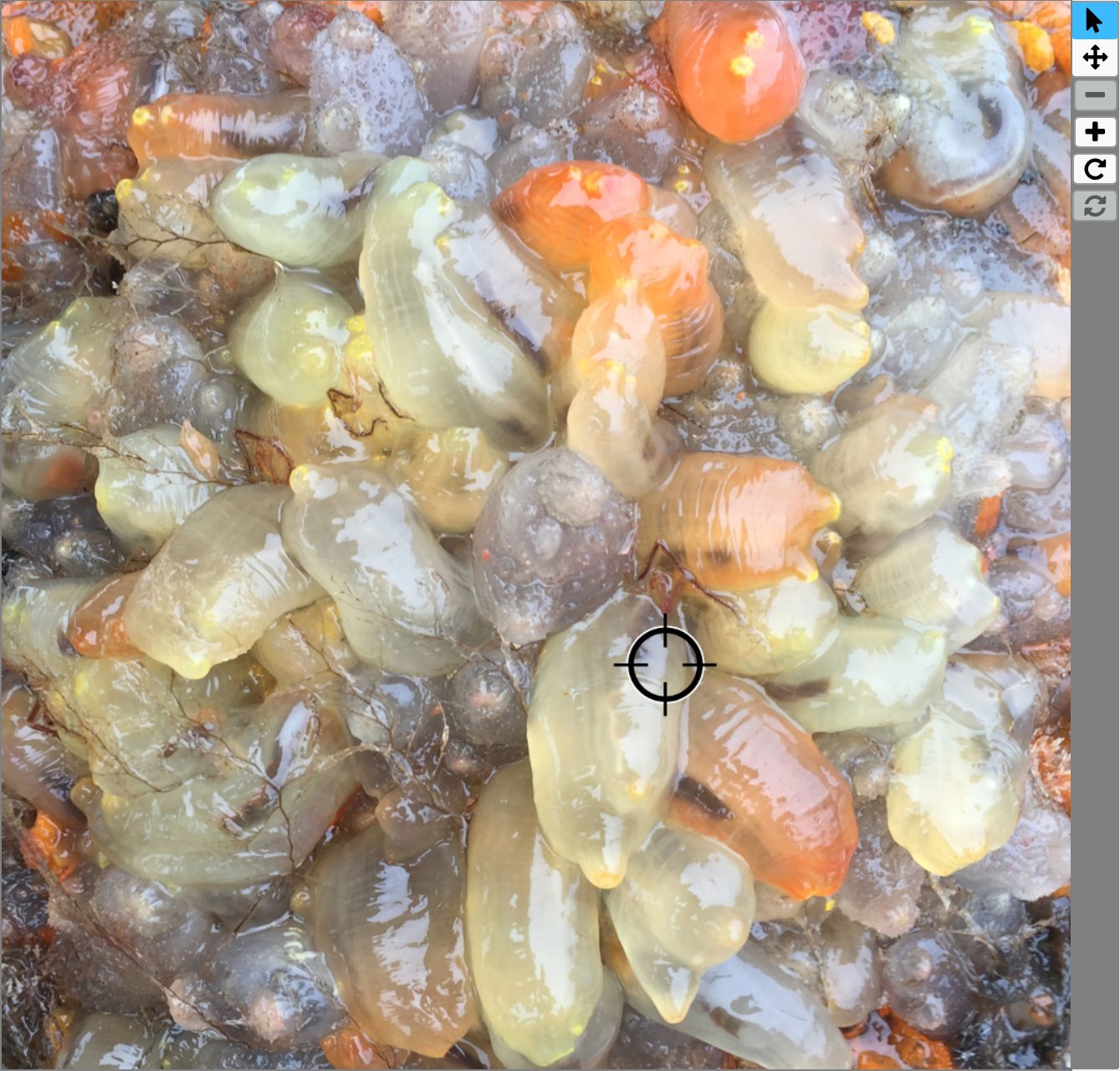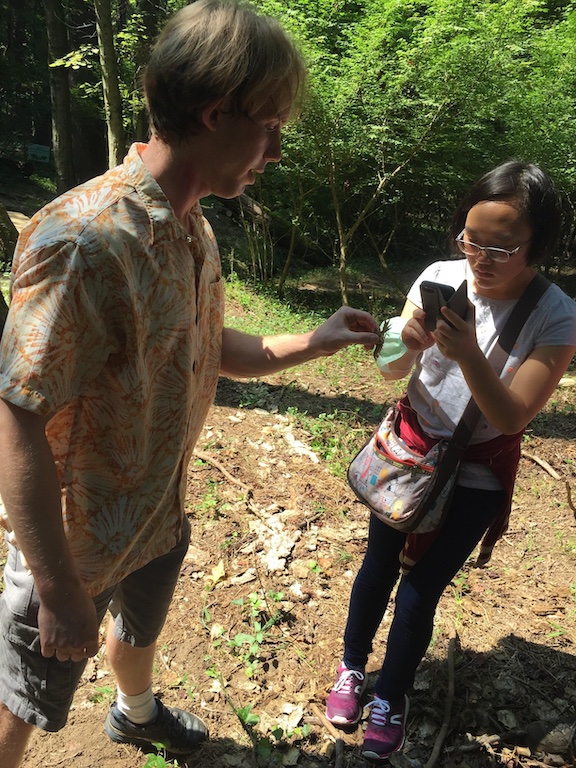To the left is a sample from the Invader ID Project on Zooniverse, an activity I chose for #ScholarsServes. The image depicts a gathering of tunicates, also known as "sea squirts".
As far as volunteer work goes, this was very amateur friendly. It doesn't take very long to familiarize yourself with the mechanics. If you happen to be bored out of your mind (with Covid19 being what it is, I'm sure this is a common sentiment), I'd recommend giving this a try. Scientists could use the extra help.
In the future, I'll add more images of SGC Events, hopefully in person by then. Look forward to it :)

Image Source: Brian Cheng, University of Massachusetts Amherst
To the left is a picture of me taking a picture of a crayfish someone caught at Guilford Woods, a part of the Anacostia watershed that is home to many different species.
While there were various other organisms in the forest like butterflies, snapping turtles, and deer, what I mostly caught on camera were fungi.
A few notable examples of the fungi I found were Turkey-Tail, Violet-toothed Polypore, and Mossy Maze Polypore. Some fungi, like the Turkey-Tail, are named for their interesting pattern and shape, while others like the Violet-toothed Polypore are easily recognized by their signature color. The Mossy Maze Polypore is identified by its mossy texture and appearance.
If you're curious about seeing the photos I took during Bioblitz, you can visit my profile on iNaturalist, the site where I uploaded my observations. If you think it looks fun, you can also create your own account and upload whatever species you encounter there. The activity in general is basically like the Invader ID, only more hands on.
